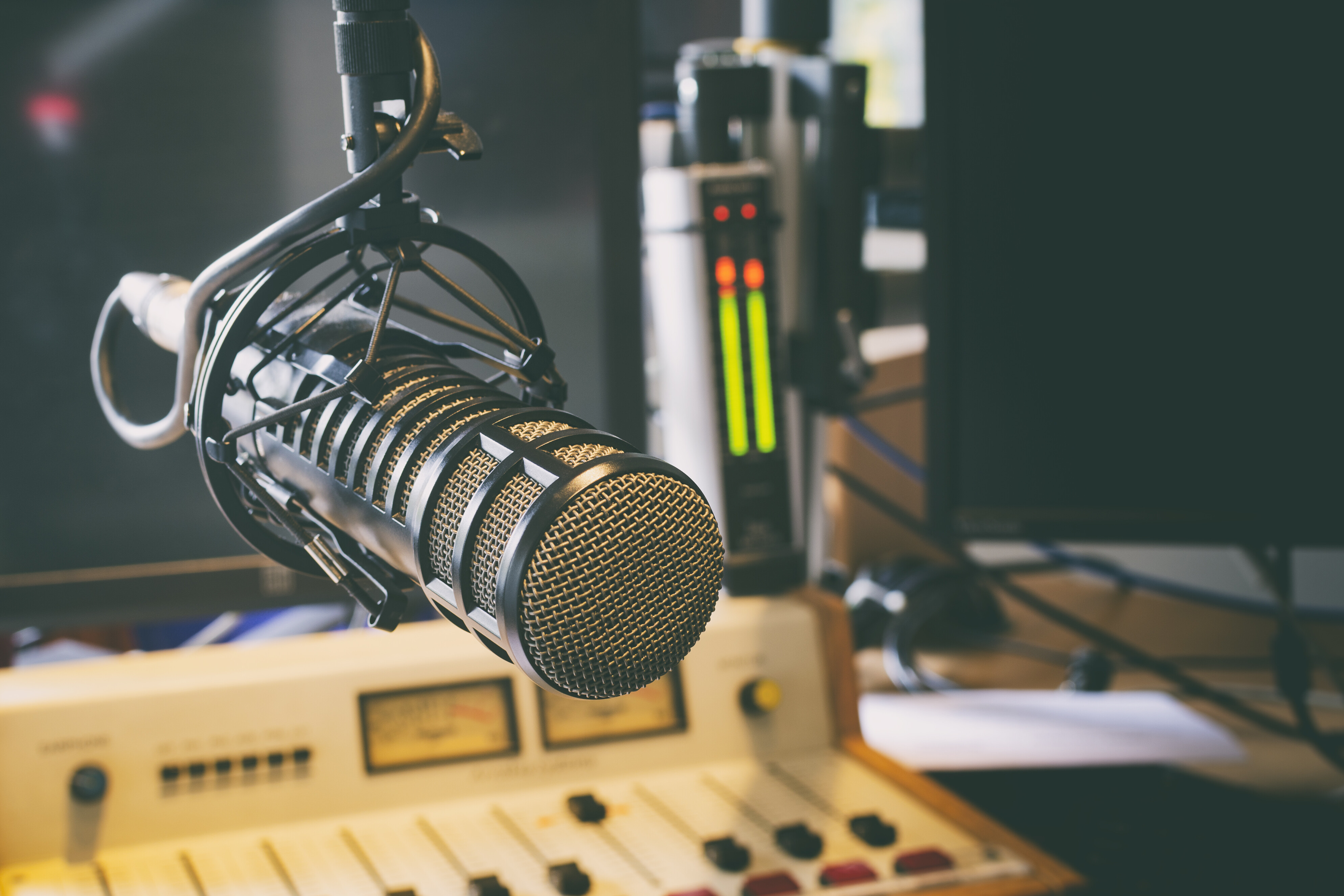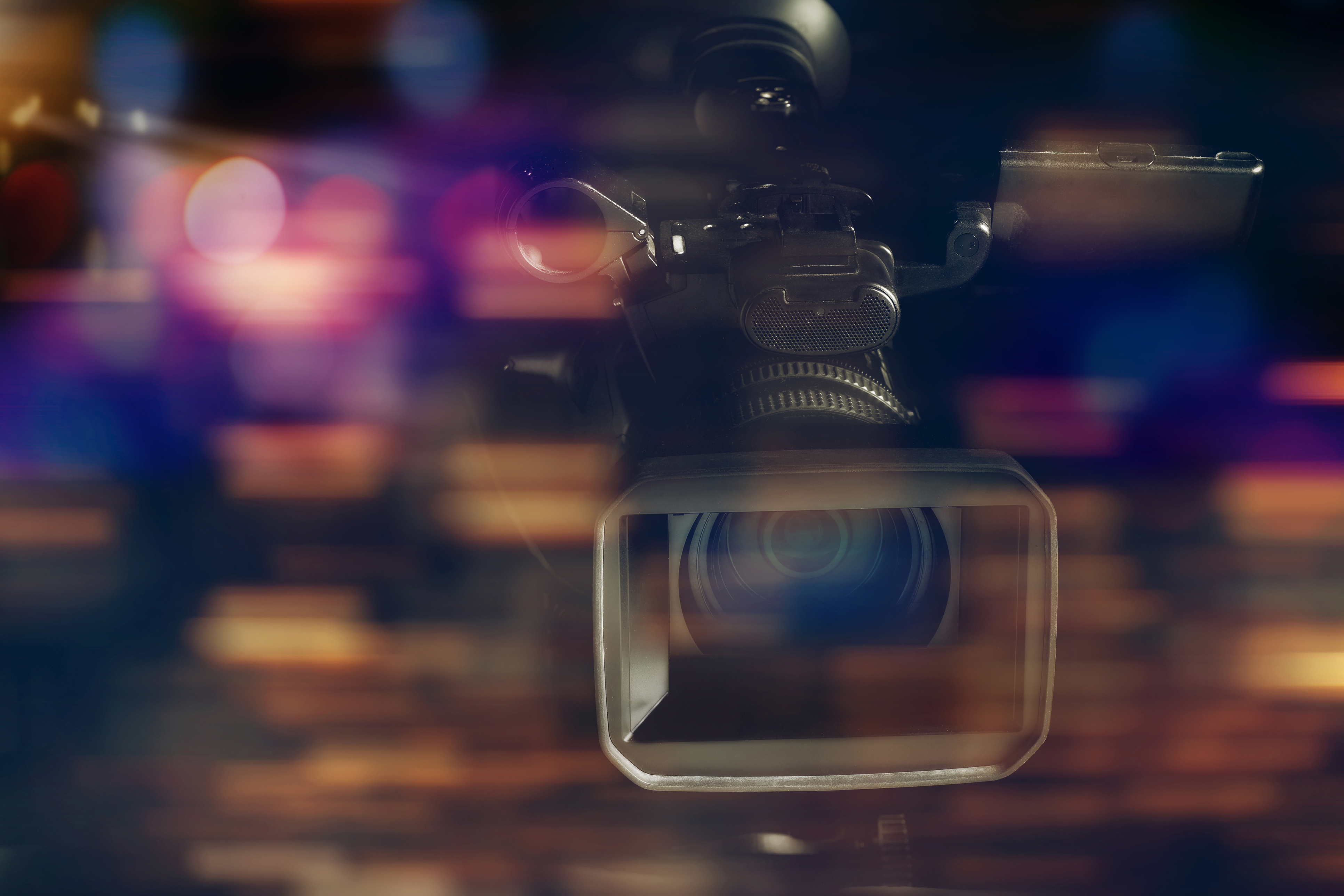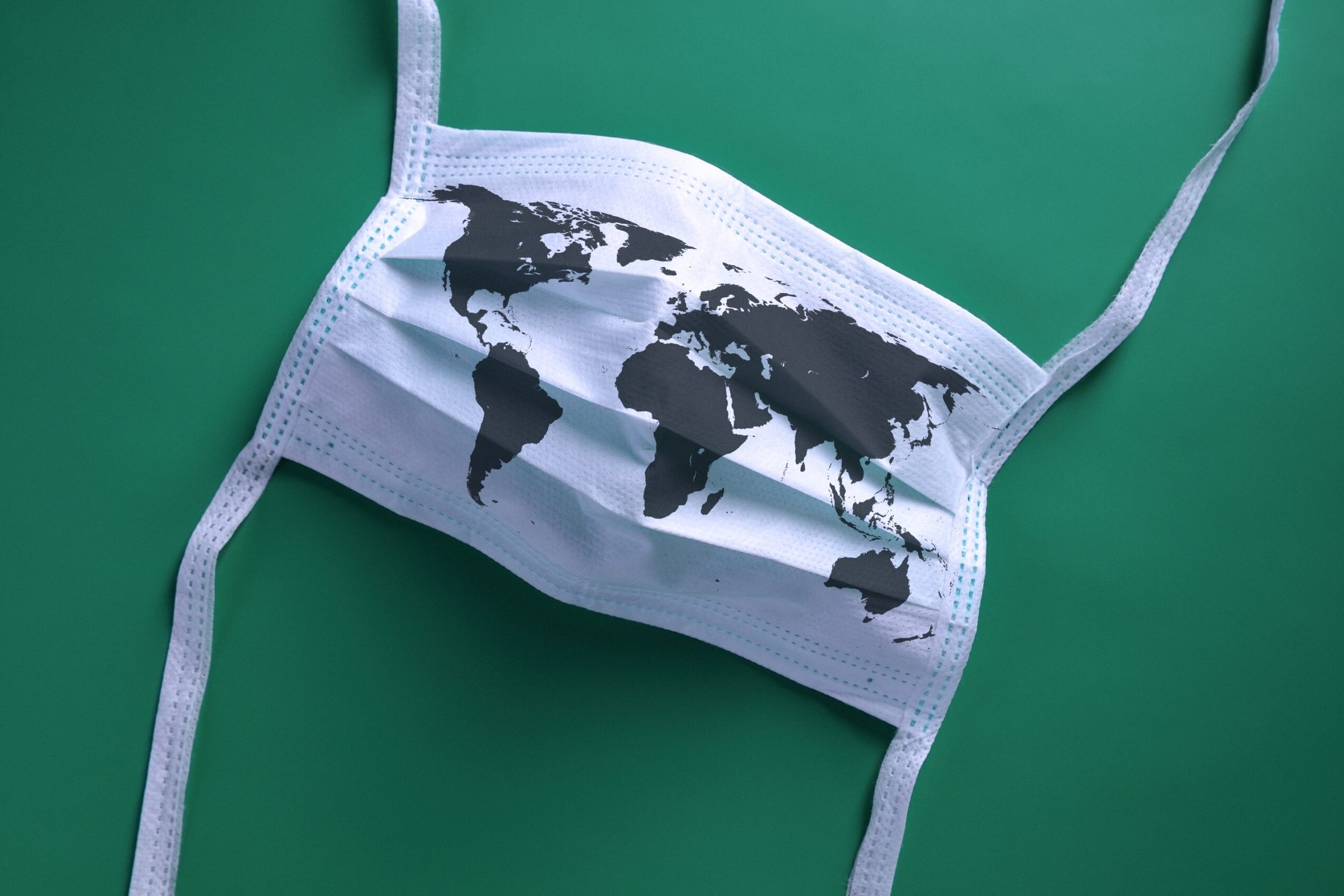For many journalists the Covid-19 pandemic will be the biggest and most complicated story of their lifetime, with many reporting global events from home without the facilities of a studio.
By Chloe Howcroft
With the virus now affecting over 180 countries, producers, journalists and other content creators face the challenge of reporting on the pandemic while adhering to strict government and WHO guidelines for physical distancing in order to limit the spread of the disease.
In a report last month, PMA explored the many contingency measures put in place by public broadcasters, and the adaptations being made to ensure that vital services are still provided for the public during these unprecedented times.
Now, from towel-covered furniture and laptops balanced on stacks of books, to the use of mobile technology and user-generated content (UGC), we highlight some of the innovative and creative ways that our members, and other public media organisations, are keeping you informed, educated and entertained during the Covid-19 pandemic.
Scroll down to view some of our highlights:
Swedish Radio
Music flows despite COVID-19! For Swedish Radio’s P2 channel, many staff have been broadcasting from home since March, which has inspired a little creativity to ensure the best quality sound.
BBC
Radio studio director, Ash (below-left), demonstrates how the production team for The Today Programme keep their studios up and running. Some examples include red tape on the floor to follow the 2 metre distancing rule as well as fewer staff working on shifts at any one time.
Presenter, Sarah Montague (below-right), shares her new home studio for the BBC Radio 4 programme, The World At One.
Very grateful to all our production teams and technical staff who are keeping the studios up and running while some of us work from home 🙏#BBCWFH #r4today #keyworkers #covid19 pic.twitter.com/EJCz5vspD8
— BBC News Press Team (@BBCNewsPR) April 24, 2020
Like millions of others, working from home today. My kitchen table is now @BBCWorldatOne studio. #bbcworld pic.twitter.com/Ejs6cQYoRG
— Sarah Montague (@Sarah_Montague) March 17, 2020
France Télévisions
Takis Candilis, Deputy Managing Director of France Télévisions, explains how the French public broadcaster has adapted some of its production and programming:
Comment @Francetele s’est-elle adaptée en termes de production et de programmation? Petit point -hors programmes éducatifs- avec @CandilisTakis DG Antennes et Programmes qui répond à certaines de vos questions. Il y aura des changements après le 11 mai. On en reparlera! pic.twitter.com/Zfj5Ev8hNn
— Médiateur France Télévisions (@MediateurFTV) April 24, 2020
RNZ
Teresa Cowie records (below-left) a story for RNZ’s Morning Report inside her wardrobe for better sound quality.
RNZ presenter, Suzie Ferguson (below-right), provides a detailed account of the realities of broadcasting at home: towel-covered furniture and the fear of children interrupting live broadcasts. Read the experiences of other RNZ staff members here:
Recording a @radionz @NZMorningReport story in my lovely quiet wardrobe. In these ‘unprecedented times’ I’m half expecting to stumble across Narnia. Sadly the closest thing in here to snow is a scuzzy bucket of damp rid pic.twitter.com/rjRVOTDdqi
— Teresa Cowie (@teresacowienz) April 2, 2020
Neither the dog or the children have made it on air… yet.. https://t.co/8Th5o4vtn3
— Susie Ferguson (@SusieFergusonNZ) March 29, 2020
ABC
ABC Perth Breakfast show presenters, Nadia Mitsopoulos and Russell Woolf (below-left), successfully keep the breakfast programme on air while working separately via video calling technology.
Director of ABC News, Gaven Morris (below-right), promotes ABC’s own roundup of staff members that are “broadcasting in the age of working from home.”
@abcperth Breakfast show did on Friday. @Russell_Woolf in the studio and me at home in my study. We were on air together from 6.15 till 10 and worked perfectly. pic.twitter.com/eRSBXwpLwR
— Nadia Mitsopoulos (@NadiaMits) March 21, 2020
Broadcasting in the age of working from home. Some @abcnews insights: ‘Sometimes Play School trumps ABC News’: Reporting and broadcasting from home under coronavirus restrictions https://t.co/c2BhKWPfoo
— Gaven Morris (@gavmorris) April 19, 2020
ABC has also been encouraging the Australian public to upload their own videos as part of a national sing-a-long to connect people of all ages during this time of crisis:
Now, more than ever, it’s important to remain connected with people of all ages – and what better way than through music? To take part, visit https://t.co/peqpYnilJL 🎤🎵📹 @TheWiggles @annabelcrabb pic.twitter.com/7BLlwHmIa7
— ABC Australia (@ABCaustralia) April 23, 2020
SABC
SABC’s Metro FM DJs are providing the South African public with Friday night entertainment via televised “house parties” while also remembering “safety first”:
Thank you @LuloCafe for sanitizing the nation with a great mix 🔥🔥 on @METROFMSA
🙌🏽🙌🏽 #Get2GetherExperience pic.twitter.com/sJCLdWpmPS— SABC1 (@Official_SABC1) April 25, 2020
Safety first with @MluDJ on #Get2GetherExperience on @Official_SABC1
And live on @METROFMSA call us on 0891103377 and get to be on air and tv same time pic.twitter.com/Y5Ze4Rv3BR— METROFM SABC (@METROFMSA) April 25, 2020
WNYC
The team at New York’s public radio station, WNYC, are keeping the Morning Edition programme up and running with some employees in the studio while the rest report from home:
WNYC’s @MorningEdition is broadcasting from home this morning 📻🏠Thanks for making it happen Juliana, @RScottHake, @alecchamilton and the whole team! https://t.co/0PpwBkAxWj
— WNYC 🎙 (@WNYC) March 19, 2020
NPR
These are particularly unprecedented times for NPR Education’s Production Assistant,Sequoia Carrillo, whose first “reporting from the field” experience is from home:
First time “reporting from the field” never pictured being in a sweatshirt or in my parents’ living room for this moment, but no complaints here pic.twitter.com/jl8aLe60C3
— sequoia carrillo (@sequoiastweets) March 18, 2020
CBC
Lineup Producer of The National, Meg Banks (below-left), shows viewers how CBC’s flagship nightly news and current affairs programme continues to broadcast during the Covid-19 lockdown from her “makeshift control room that she has put together at her Toronto home”.
Meanwhile, Editor of CBC News, Brodie Fenlon (below-right), shares photos and videos of the various ways that CBC News staff are providing much-needed news about Covid-19.
My latest blog, with some nice photos and a video of our @CBC @CBCNews staff doing #journalism & current affairs differently across Canada #COVID19 #COVID19Pandemic https://t.co/8Wp7EKIb1M
— Brodie Fenlon (@brodiefenlon) April 3, 2020
RTÉ
It is not a new phenomenon for RTÉ News Digital Native Video Journalist, Eleanor Mannion, to be using mobile devices and gadgets to produce stories. We can also see how RTÉ has been using user generated content from Irish citizens abroad.
Thanks Corinne ☺️ https://t.co/d1LvxqkHKc
— Eleanor Mannion (@eleanormmannion) April 6, 2020
“Ireland has never felt so far away”. Irish people abroad reflect on how the coronavirus pandemic has changed their daily lives and their connection to home… #InThisTogether pic.twitter.com/IuMKEoimQO
— RTÉ News (@rtenews) April 3, 2020
NHK
This is a behind-the-scenes snapshot of one of the Japanese public broadcaster, NHK’s programmes in production. ‘ETV’ is a special documentary programme that covers a wide range of social issues and in this episode, “Emergency Talk: A World Changing by a Pandemic, 60 Minutes with Yuval Noah Harari”, Special Affairs Commentator, Aiko Doden, uses video calling technology to interview her guest:
What lies ahead after the Coronavirus ? If this pandemic was a wake-up call, what are we waking up to ? Our next edition of NHK ETV Special comes to you from #Tokyo with Skype interviews by #AikoDoden with #YuvalNoahHarari, #IanBremmer and #JacquesAttali pic.twitter.com/TKZgG51s4E
— nhk_Etoku (@nhk_Etoku) April 11, 2020
Rai Radio Kids
Culinary expert, Marco di Buono, shares fun cooking recipes for kids from his home during Italy’s lockdown. Episodes and podcasts can be found here.
Quale sorprese avrà preparato Papà Marco per la puntata di oggi di Diario Kids?
Cosa bolle in pentola?
Scopriamolo insieme alle 10.30 e alle 12.30 su Radio Kids 👇📲🎧 pic.twitter.com/UAiVkbOJRc— Radio Kids (@RaiRadioKids) April 18, 2020
SVT
Swedish public television has also been using utilising UGC to document the Coronavirus crisis by encouraging the Swedish public to send in videos about their everyday experiences during lockdown (below-left),
SVT’s News Editor, Charlotta Friborg (below-right), explains how Sweden’s public television broadcaster has had to adapt during the Covid-19 pandemic.
Hjälp SVT dokumentera coronakrisen: Bidra med en video från din nya vardag https://t.co/bSVz7WJrlS
— SVT Nyheter (@svtnyheter) April 8, 2020
Inblick i en utmanande tid – så jobbar nyhetsredaktionen mitt i coronakrisen https://t.co/4qrlKfHdF1 via @svtnyheter
— Charlotta Friborg (@Charl8) April 8, 2020
Do you work for a public media organisation?
We’re interested in how you’re adapting to working under lockdown. Get in touch and let us know your stories
Header Image: Professional camera filming a video podcast stock photo. Credit: Mixetto/iStock
Related Posts
23rd April 2020
Global Task Force: Public Media Serving in the time of a pandemic…
The year 2020 will be forever etched in…
27th March 2020
Governments must not use coronavirus as an excuse to curtail media freedom
The Public Media Alliance urges…



